For businesses dealing with temperature-sensitive products, the term “cold storage” often brings to mind a single image: a vast, frozen warehouse. But the reality of modern cold chain management is far more nuanced. It’s not about one-size-fits-all freezing; it’s a precise science of maintaining specific temperature zones, each meticulously controlled to preserve the unique integrity of different products. From frozen foods and life-saving vaccines to fine chocolates and fresh produce, the right temperature isn’t just a suggestion; it’s the critical factor that determines product quality, safety, and compliance.
Understanding the different cold storage temperature zones is fundamental for any business whose success depends on the stability of its products. A slight deviation can ruin an entire shipment, leading to significant financial loss and potentially irreparable damage to a brand’s reputation. This guide will explore the essential temperature zones, how they work, and why mastering this aspect of temperature-sensitive logistics is non-negotiable for ensuring product quality from production to the end consumer.
More Than Just “Cold”: Defining the Core Temperature Zones
A professional cold storage facility is not a single, uniformly cold space. It is a complex environment divided into distinct zones, each engineered to maintain a precise temperature range. These zones are the backbone of effective cold chain management, allowing a single facility to safely store a wide variety of goods. While there can be many custom ranges, most products fall into three primary categories.
Frozen Zone: Deep Cold for Long-Term Stability
The frozen zone is what most people picture when they think of cold storage. Typically maintained at temperatures between 0°F and -10°F (-18°C to -23°C), this environment is designed for long-term preservation. Freezing halts the growth of microorganisms and dramatically slows the chemical changes that cause food and other products to spoil.
This zone is essential for products like frozen vegetables, meats, seafood, and ready-to-eat meals. For these items, consistency is key. Even minor temperature fluctuations, a phenomenon known as “temperature abuse,” can cause ice crystals to melt and refreeze, damaging the product’s texture, flavor, and nutritional value. In the pharmaceutical world, many vaccines and biologic drugs require deep-frozen states to maintain their efficacy. A failure to maintain these temperatures renders them useless. A professional facility ensures this stability with redundant cooling systems and 24/7 monitoring to prevent such costly failures.
Refrigerated (or Chilled) Zone: Cool, Not Frozen
The refrigerated zone, often called the “chilled” zone, operates at temperatures above freezing, typically between 32°F and 40°F (0°C to 4°C). This environment is ideal for products that need to be kept cool to slow spoilage but would be damaged by freezing.
This is the domain of fresh produce like fruits and vegetables, dairy products like milk and cheese, and many fresh meats. For these products, the goal is to extend shelf life while maintaining freshness. The wrong temperature can have dramatic effects. For example, storing bananas in a zone that is too cold will cause the peel to blacken and the fruit to lose its texture. Conversely, a temperature that is too high will accelerate ripening and spoilage. This zone is also critical for certain pharmaceuticals, such as insulin, that must be kept cool but never frozen.
Ambient (or Controlled-Room Temperature) Zone: Consistent and Cool
The term “ambient” can be misleading. In logistics, it doesn’t just mean room temperature; it refers to a controlled environment that is protected from the extremes of both heat and cold. This zone is typically maintained between 50°F and 77°F (10°C to 25°C).
This controlled space is perfect for shelf-stable foods like canned goods, grains, and certain snacks that can be damaged by high heat or humidity. Think of chocolate, which can melt in a hot warehouse, or fine wines, whose aging process can be ruined by temperature swings. This zone is also vital for many finished pharmaceuticals and medical devices that must be stored at a consistent, documented room temperature to comply with FDA regulations. An ambient zone in a professional 3PL facility provides the stability that a standard, non-climate-controlled warehouse cannot guarantee.
The Impact on Product Quality, Safety, and Compliance
Maintaining the correct temperature zone is directly linked to three critical business outcomes: product quality, consumer safety, and regulatory compliance.
Protecting Product Quality
For your customers, quality is everything. It’s the taste of the food, the effectiveness of the medicine, and the appearance of the product. The right temperature zone protects the sensory and functional attributes that define your brand. A slight increase in the temperature of ice cream can lead to a grainy texture. A dip in temperature for fresh flowers can cause them to wilt. These seemingly small changes have a massive impact on the customer experience and their perception of your brand.
Ensuring Consumer Safety
Beyond quality, temperature control is a matter of public health. For food products, failure to maintain the cold chain can allow harmful bacteria like Salmonella and E. coli to multiply, leading to foodborne illness. In the pharmaceutical industry, the stakes are even higher. A vaccine that has been exposed to improper temperatures may not only be ineffective but could also cause harm. Proper cold chain management is a non-negotiable responsibility.
Meeting Regulatory Compliance
Government agencies like the FDA and USDA have strict regulations for the storage and transportation of temperature-sensitive goods. The Food Safety Modernization Act (FSMA), for example, requires businesses to maintain detailed records documenting temperature control throughout the supply chain. Failure to comply can result in hefty fines, product seizures, and legal action. A professional cold storage partner with a modern Warehouse Management System (WMS) provides the validated environments and automated record-keeping needed to ensure you remain compliant, even as regulations evolve.
The Right Zone for the Right Product
The science of cold storage temperature zones is at the very heart of modern logistics for any business with a temperature-sensitive product. It’s about more than just keeping things cold; it’s about creating precise, stable, and validated environments that protect product integrity, ensure safety, and guarantee compliance. Partnering with a logistics expert who understands these nuances is not a cost center; it’s a strategic investment in your brand’s reputation and your company’s future. By ensuring your product is always in the right zone, you build a foundation of quality and trust that will support your growth for years to come.
Find the Right Temperature Zone for Your Products
Navigating the complexities of cold storage is crucial for maintaining product quality and compliance. At M&M Quality Solutions, we provide state-of-the-art cold storage facilities with meticulously controlled temperature zones to meet the specific needs of your products. Contact us today to learn how our expert cold chain solutions can protect your brand and help your business thrive.


